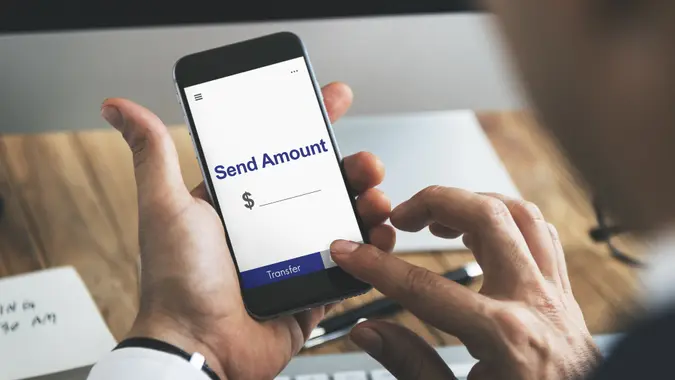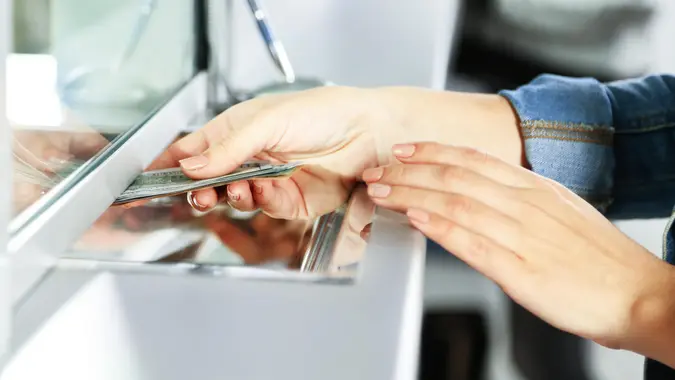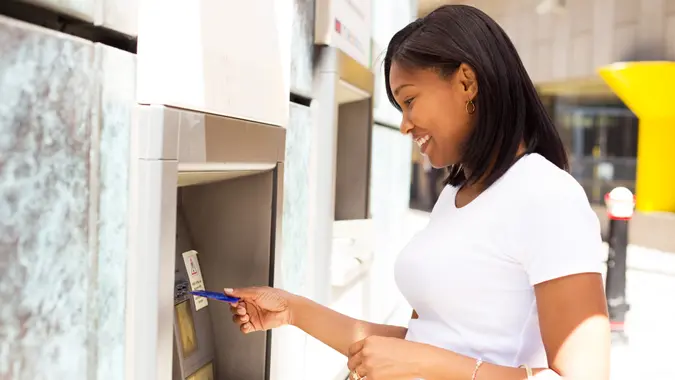What Is a Bank Account Number?

Commitment to Our Readers
GOBankingRates' editorial team is committed to bringing you unbiased reviews and information. We use data-driven methodologies to evaluate financial products and services - our reviews and ratings are not influenced by advertisers. You can read more about our editorial guidelines and our products and services review methodology.

20 Years
Helping You Live Richer

Reviewed
by Experts

Trusted by
Millions of Readers
Bank account numbers play a pivotal role in the modern banking system. But what exactly is a bank account number and why is it important? Keep reading to learn why this number is the key to each transaction you make.
What Is a Bank Account Number?
A bank account number is a unique identifier assigned to a bank account. It’s a series of digits that distinctly identifies your individual account within a bank. This number is crucial for conducting financial transactions, such as transferring money, setting up direct deposits or paying bills.
The Importance of Bank Account Numbers
Each transaction you make is associated with your unique bank account number, which allows banks to track and record financial movements precisely. This precision is vital for maintaining the integrity of your financial records and ensuring that your funds are correctly accounted for.
Without this level of organization, the banking system would be prone to errors, potentially leading to misdirected funds or financial discrepancies.
How Bank Account Numbers Work
Each bank account number is unique to the account holder. When you perform a transaction, the bank uses this number to track where money is coming from or going to. In online banking, this number is often required to set up payment systems or link your account to financial apps.
Every bank account number is uniquely structured to provide specific information about your account. While the format can vary between different banks or countries, the primary purpose remains the same — to uniquely identify your account among the millions of others.
Keeping Your Bank Account Number Safe
It’s crucial to keep your bank account number secure, as it is a key piece of information that can be used for various financial transactions. In the hands of scammers, your account number can be used for fraudulent activities like unauthorized withdrawals or identity theft. These fraudulent activities can lead not only to financial loss but also to long-term damage to your credit score and financial reputation.
Here are some tips to keep your bank account number safe:
- Regularly check your bank statements for any unauthorized transactions.
- Use secure, encrypted websites when conducting online banking or transactions.
- Make sure you use strong, unique passwords for your banking accounts.
- Enable two-factor authentication where available.
Final Take
Understanding what a bank account number is and how it functions is key to managing your financial transactions effectively. This number is integral to the secure and efficient operation of your banking activities, making it a vital piece of your financial toolkit.
FAQ
Here are the answers to some of the most frequently asked questions regarding bank account numbers.- Where do I find my bank account number?
- You can find your bank account number in several places:
- Bank statements: Your account number is usually listed on your bank statements.
- Online or mobile banking: Log into your online or mobile banking account. Your account number is typically displayed in the account summary or account details section.
- Checks: If you have checks, your account number is usually printed on the bottom, following the bank's routing number.
- Bank customer service: You can also contact your bank's customer service for assistance.
- You can find your bank account number in several places:
- Are all bank account numbers 11 digits?
- Not necessarily. The length of bank account numbers varies by country and by bank. In the United States, bank account numbers can range from 8 to 17 digits. In other countries, the standard length might differ. It's important to check with your specific bank to understand the format of your account number.
- What is an example of a bank account number?
- An example of a bank account number could be something like 12345678901 or 987654321. However, it's important to note that these are just fictitious examples for illustration. Real bank account numbers have a specific structure and length set by the individual bank and are unique to each account holder.
- Is my account number my card number?
- No, your account number and your card number are different. Your account number identifies your specific bank account and is used for transactions like deposits and transfers. Your card number, typically 16 digits long on a debit or credit card, is linked to your account but is used for card-based transactions. Both numbers are unique and serve different purposes in banking and financial transactions.
Editor's note: This article was produced via automated technology and then fine-tuned and verified for accuracy by a member of GOBankingRates' editorial team.
Our in-house research team and on-site financial experts work together to create content that’s accurate, impartial, and up to date. We fact-check every single statistic, quote and fact using trusted primary resources to make sure the information we provide is correct. You can learn more about GOBankingRates’ processes and standards in our editorial policy.
 Written by
Written by 
























